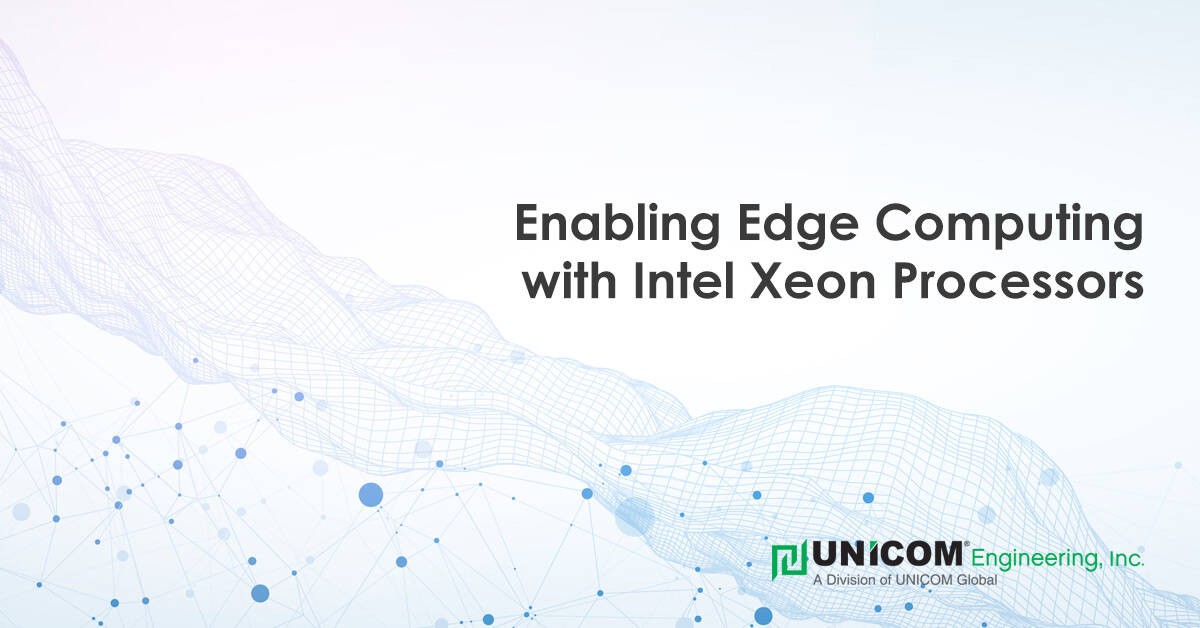Thanks to the latest 3rd Gen Intel Xeon Scalable processors, providers are free to create solutions that live outside traditional data centers. Edge-based architecture can support the newest technology, like AI and IoT, but it can also do so securely while outperforming prior generations.
Edge-Based Artificial Intelligence
Solution providers are coming up with new ways to leverage machine and deep learning nearly every day. However, in the past, AI has been restricted to discrete platforms in the cloud and core data centers. As a result, large volumes of data were needed to make their way through traditional network channels to feed AI engines. AI applications were often forced to perform inferences on less data than desired or take the time necessary to collect all the needed data.
At the same time, thanks to new industrial IoT sensors, more data is being generated than ever in the field. However, getting this data to AI servers located at the core has been challenging because older Edge gateways and network latency can create bottlenecks.
In response, a new generation of Intel Xeon processors is designed to live and perform at the Edge and alleviate congestion. Specifically, Intel Xeon D-2700 and Intel Xeon D-1700 processor SKUs offer a 2.4x gen over gen improvement in AI inference. In addition, with Intel DL-Boost, they can run AI, ML, and 5G workloads simultaneously. And the Intel DL Boost Vector Neural Network Instructions (VNNI) combines three instructions into one to maximize system performance.
Therefore, not only can Intel Xeon processors drive the performance of your AI application itself, but they also enhance its ability to transmit data. This integration of computing and network functions lowers latency and eliminates bottlenecks.
Use Cases for Intel Xeon Processors and Edge-Based AI
As you might guess, the list of use cases for this technology grows every day. Some of them include:
Image Classification - Where inference engines are taught how to sort through images and find patterns.
Speech Recognition - Where AI enables humans to use natural speech as a legitimate data source.
Language Translation - Where applications can now translate human speech into other languages at real-time speed.
Object Detection - Used in up-and-coming security and self-driving car systems to allow automated vehicles to detect objects and signs on roadways.
Industrial IoT - Where shop floor machinery sensors can feed an AI that predicts and prevents dangerous accidents before they happen.
Security at the Edge
As one can see, there are multiple incentives for solution providers to build on Edge servers powered by 3rd Gen Intel Xeon Scalable processors. Still, since Edge locations are outside the data center and are often remote, putting more resources there may stir security and reliability concerns.
Intel has built features into its latest Xeon Scalable generation on the security side. For example, Intel's Software Guard Extensions (Intel SGX) provide hardware-level data encryption. 3rd Gen Intel Xeon Scalable processors create protected enclaves of memory in which an application's code is secured even from an OS attack.
Edge Performance and Durability
Still, encryption meant a lowering of system performance in the past, making some security measures impractical. Intel Xeon D processors, however, support up to 100 Gbps of crypto, so there is no sacrifice in CPU performance.
And to further enhance performance, Intel Xeon D CPUs also offer Quick Assist Technology (Intel QAT) to support 70 Gbps compression. Intel QAT uses separate, on-board processors to enable the CPU to offload compression, outperforming older PCI card-based solutions. The net result is that the CPU is freed to handle larger workloads faster.
But Intel didn't stop with crypto acceleration within the CPU. Intel Xeon D processors also offer Network Acceleration Complex (NAC), which provides high-performing Ethernet I/O gains of up to 50% over the prior generation. This improvement can enable Secure Access Server Edge (SASE) configurations, SD-WANs, access gateways, and other network functions that support the latest solutions.
Also, a concern with Edge server deployments is the limited spaces in which they operate. After all, the very nature of Edge computing is to bring processing to locations that operate closer to end-users. Whereas space and conditions were a limitation in the past, Intel Xeon D processors are mounted in a BGA package that allows for greater power efficiency and can operate in various form factors. As a result, they can run in compact and ruggedized configurations.
To Enable Your Edge Computing Solution, Partner with UNICOM Engineering
Discover how far your next innovation can go beyond the typical constraints of Edge computing. As an Intel Technology Provider and a Dell Technologies Titanium OEM Partner, UNICOM Engineering is ready to enhance your AI solutions for optimal performance and reliability. In addition to our deep technical expertise that drives transitions to next-gen platforms, we are flexible and agile in our pursuit to bring your solutions to market. And, our global footprint allows your solutions to be built and supported around the world by a single company. Now you can begin to understand why leading technology providers trust UNICOM Engineering as their application deployment partner. Schedule a consultation today to learn how UNICOM Engineering can assist your business.
